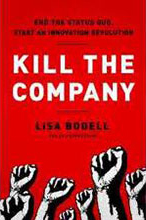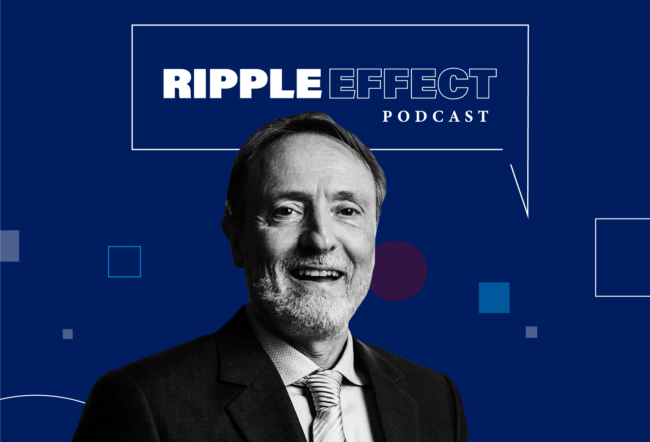For many, implementing an innovation strategy, which requires changes within an organization, means adding layers of new processes. Lisa Bodell, author of Kill the Company: End the Status Quo, Start an Innovation Revolution, argues that there are straightforward ways to make change without bogging down the organization. Bodell insists that whether an organization is doing exceptionally well or struggling, now is the time to address weaknesses and issues so that innovation can begin. Knowledge at Wharton spoke with Bodell recently about her approach to getting companies to face their vulnerabilities, why taking risks are essential and why small changes make all the difference.
An edited version of the transcript appears below.
Knowledge at Wharton: You open your book, Kill the Company, with a group of people ferociously plotting to decimate their main competitor as they aim for market domination. But there’s a twist. We discover that this group is engaged in an exercise to help them look at their own company’s vulnerability. In fact, it was their own company they had torn apart. What is this exercise all about?
Lisa Bodell: Kill the Company is about having an out-of-company experience. It’s about examining your weaknesses so that you can make them your strengths. In most businesses each year, we do a SWOT analysis [to examine] our strengths, weaknesses, opportunities and threats. Most people use it as a political construct to say where they are strong and [to say that] they are not really weak — they’re challenged. That doesn’t work. Kill the Company [allows you to] pretend that you are your number-one competitor. You have three minutes: How will you put yourself out of business? Especially with executives, it gets their war mentality on. They are given permission to really look at what’s wrong, and then ideally, find out where they are really weak. What can you do about it? Who can you partner with? Even better, how can you then turn that back onto your competitors? It’s just a neat way [to look] at what your weaknesses are, but you give it a gaming mentality.
Knowledge at Wharton: Part of what you’re looking at is removing obstacles to innovation. What are some of the obstacles that you see?
Bodell: There are many. Inherently, a lot of people are averse to taking a risk, and they don’t realize it. Leaders say that they want their teams to take a risk, when they may be the biggest barrier to risk because they have so much on the line, [including] quarterly earnings. Another thing is a lack of definition around how much risk you can take. If you can have leaders suddenly [becoming] open to more risk and defining it, they will operate less with handcuffs and more with guardrails and be willing to [make], not just incremental change, but really dramatic, disruptive change.
Knowledge at Wharton: If a company is committed to making that kind of change, how would managers go about looking at where the firm fails on the innovation spectrum?
Bodell: What they have to do is look at their culture … to determine how much risk they are willing to take. I think they can look at a few things. How much do their executives lead by example? How much failure or experimentation are you allowed to take? How many resources — time or money — do they put toward new ventures? What metrics are they measuring, and do those metrics have to do with new things? You’ll get a real feel for that spectrum quickly.
Knowledge at Wharton: In terms of different types of organizational cultures, what do you see?
Bodell: Over the last few years, I studied corporate cultures and change. What was fascinating to me is we seem to talk about cultures in terms of good versus bad. But I don’t think it’s that simple. There’s another culture that permeates all of the organizations that many of us have worked at, and it’s probably the silent killer. The worst kind of culture isn’t a bad culture, it’s a complacent one. The world has gotten so complex that we keep putting more and more processes in place, and the result of this is that people become complacent. They no longer think they can effect change. Even though they think they might want to, they give up. It’s the, ‘Oh, everything’s just fine’ mentality, and we see that at a lot of big corporations. They have the money and the brand, and they can ride it out for a long time, until all of a sudden, where did that small company come from? They had a complacent culture. That’s something that people really have to watch for in the future.
Knowledge at Wharton: If an organization is ready to change, what are the tenets to making change stick?
Bodell: There are a few. In fact, we did some case studies over the last couple of years because we didn’t know what really made change stick. What we’ve found … wasn’t what I thought when we first set out to do it. The first is that change has to happen, not from the top down, but from the middle out. What I mean by that is it has to really stick with people who are in the trenches who are respected by leadership but who are admired by those who are rising stars. These are the guys who are … slugging it out every day, [and they] can really effect change the most as long as, of course, leadership wants them to make that change in the first place.
The second thing is we think change is a process. I don’t believe that’s true. If innovation or change was a process, we all could do it because I’m sure people are very smart and can follow the rules. I think it’s a tool kit. In this world that’s so complex, they need on-demand tools they can draw on when different things come at them. The final thing is I don’t think it can be big mandates. I think it has to be something called Little Bigs. It’s change with a little ‘c’. We have to start effecting change on an everyday level — in those meetings, with emails, with reports, with procedures. We have to effect it by leading by example in small ways to get people to then want to make big change. That’s not something we expected. We thought it would be big change initiatives, and in fact, it was the opposite that worked. So that was a great, cool learning for us.
Knowledge at Wharton: To pick up on the first part of what you talked about, you cite recent research from Wharton management professor Ethan Mollick that shows that middle managers have more impact on a company’s performance than nearly any other part of the organization. Can you tell us more about how that works?
Bodell: There are more managers than there are leaders, right? Those are the people who are really on the ground and who know how to run the business and can really effect change with so many people, so I think it’s important to acknowledge it. Second, what you find is that people don’t want a fire lit from underneath them by leaders. They want a fire lit within them and people can’t tell you to do that. They have to really believe that they can effect change to do it, so I think the managers are the ones who we really need to concentrate on with change versus [using] top-down approaches.
Knowledge at Wharton: You argue that employees need certain skills. What are some of those?
Bodell: When we did some research, it wasn’t what I thought. It’s some basic things. It’s perseverance. Especially with innovation and change, you can’t expect it to happen the first try, so you have to have some perseverance. That’s hard in this really on-demand, do-it-this-quarter world. You need to have agility. You have to be able to pivot, have a plan B. That’s really important. We talk a lot about provocative inquiry. There’s a lost art of asking questions. We’re so focused on getting the answer and being right that we’ve forgotten how to ask the right question. Some of it is because we don’t want to make people uncomfortable, and I think some of it is we’ve just forgotten how. Another one I’ll mention is strategic imagination. I [use that phrase] because I want to separate it from creativity. People can come up with ideas, but you’ve got to be a dreamer with purpose in today’s day and age because there’s only so much money and time. People who have strategic imagination will be the ones who rise to the top.
Knowledge at Wharton: As a final question, please tell us about some companies that you think are getting it right.
Bodell: I’m a big fan of Shell, and not many people mention oil or energy companies. I’m a fan of them because I think what they do that’s really interesting is they … are constantly looking to disrupt their business model. They have plenty of money, and they can make money for a long time without changing, but they imagine, for example, will we live in a world soon where we are no longer extracting energy but growing it? They start to build that kind of a business. Companies like GM and BMW are looking at their business models and saying “Well, gosh, if everybody is really moving toward urban models and living in cities, maybe they won’t be able to drive as many cars, so maybe we won’t be a car company; we’ll be a mobility systems company.” They are really forward-thinking in terms of how they destroy or kill their own companies to become ones that they need to be before someone else kills them.



